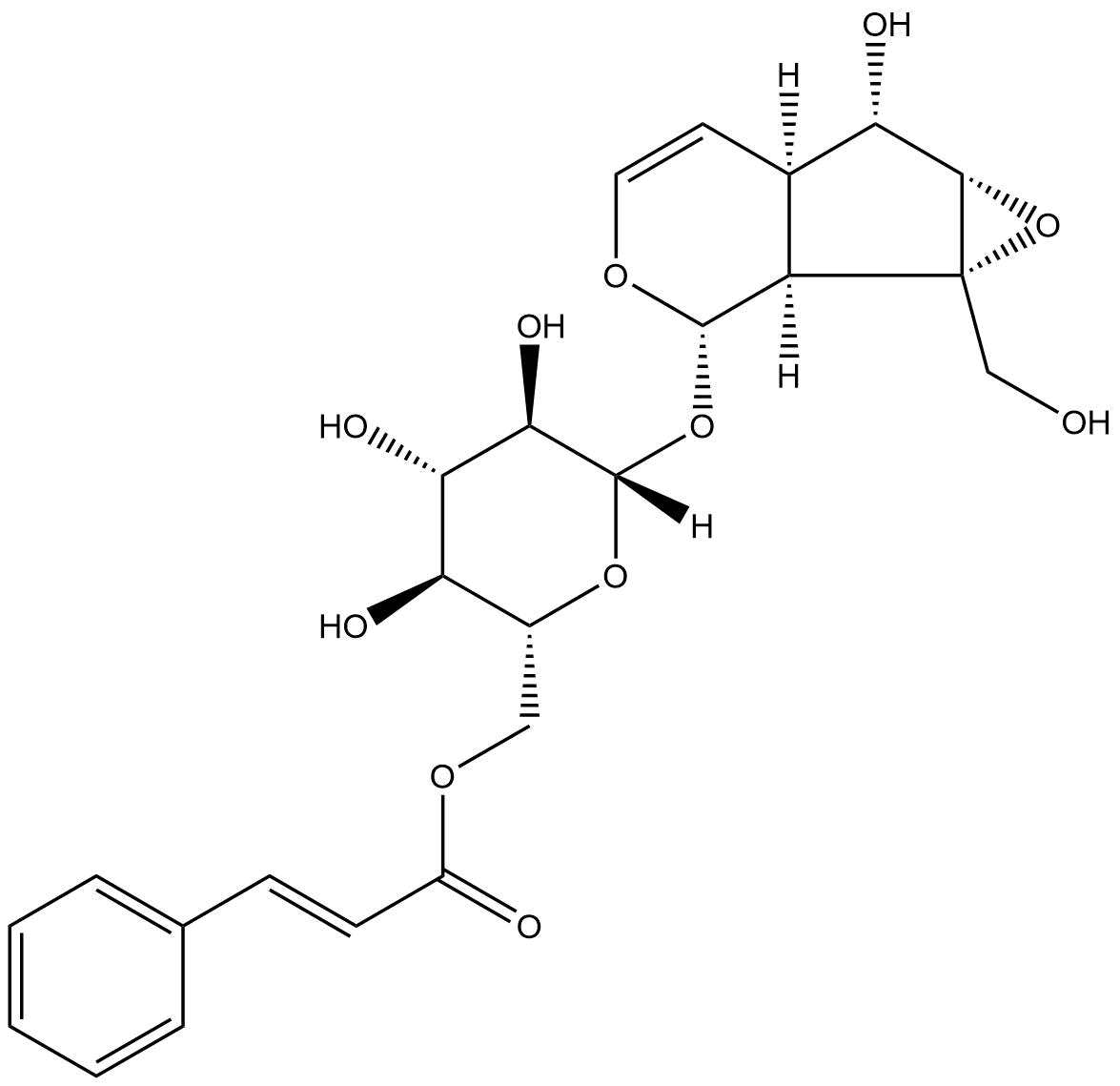
Picroside ICAS No.:27409-30-9 |
||||||||||
 |
|
|
||||||||

| Catalogue No.: | BP1099 |
| Formula: | C24H28O11 |
| Mol Weight: | 492.477 |
| Botanical Source: | Picrorhiza scrophulariiflora Pennell |
Product name: Picroside I
Synonym name: Globularicisin; Other Cas No, 76248-14-1
Catalogue No.: BP1099
Cas No.: 27409-30-9
Formula: C24H28O11
Mol Weight: 492.477
Botanical Source: Picrorhiza scrophulariiflora Pennell
Physical Description:
Type of Compound: Iridoids
Purity: 95%~99%
Analysis Method: HPLC-DAD or/and HPLC-ELSD
Identification Method: Mass, NMR
Packing: Brown vial or HDPE plastic bottle
Storage: Store in a well closed container, protected from air and light. Put into refrigerate or freeze for long term storage.
Whenever possible, you should prepare and use solutions on the same day. However, if you need to make up stock solutions in advance, we recommend that you store the solution as aliquots in tightly sealed vials at -20℃. Generally, these will be useable for up to two weeks.
The product could be supplied from milligrams to grams
Inquire for bulk scale.
Description:
Picroside I is a hepatoprotective agent which is reported to be antimicrobial and used against hepatitis B. It has antioxidant, and anti-inflammatory activities, it may be the valuable anti-invasive drug candidates for cancer therapy by suppressing Collagenases and Gelatinases. Picroside I can enhance basic fibroblast growth factor(bFGF)-, staurosporine- or dbc-mitogen-activated protein (MAP)-induced neurite outgrowth from PC12D cells.
References:
Life Sci. 2002 Aug 30;71(15):1821-35.
Picrosides I and II, selective enhancers of the mitogen-activated protein kinase-dependent signaling pathway in the action of neuritogenic substances on PC12D cells.
METHODS AND RESULTS:
Picroside I and Picroside II caused a concentration-dependent (> 0.1 microM) enhancement of basic fibroblast growth factor (bFGF, 2 ng/ml)-, staurosporine (10 nM)- and dibutyryl cyclic AMP (dbcAMP, 0.3 mM)-induced neurite outgrowth from PC12D cells. Furthermore, picrosides-induced enhancements of the bFGF-action were markedly inhibited by GF109203X (0.1 microM), a protein kinase C inhibitor. The expression of phosphorylated MAP kinase was markedly increased by bFGF (2 ng/ml) and dbcAMP (0.3 mM), whereas that was not enhanced by staurosporine (10 nM). Picrosides had no effect on the phosphorylation of MAP kinase induced by bFGF or dbcAMP and also unaffected it in the presence of staurosporine. These results suggest that Picroside I and Picroside II enhance bFGF-, staurosporine- or dbcAMP-induced neurite outgrowth from PC12D cells, probably by amplifying a down-stream step of MAP kinase in the intracellular MAP kinase-dependent signaling pathway.
CONCLUSIONS:
Picroside I and Picroside II may become selective pharmacological tools for studying the MAP kinase-dependent signaling pathway in outgrowth of neurites induced by many kinds of neuritogenic substances including bFGF.
Phytother. Res., 1993, 7(6):402-7.
Antiinflammatory activity of the iridoids kutkin, picroside-1 and kutkoside from Picrorhiza kurrooa
Powdered roots of Picrorhiza kurrooa (PK), its alcoholic extract (AEPK) and active constituents kutkin, Picroside I and kutkoside demonstrated antiinflammatory activity (AIA) in a variety of test models. Significant AIA was recorded in adjuvant-induced and formaldehyde arthritis in rats and mice. In carrageenan-induced oedema inhibitory activity was remarkably enhanced upon intraperitoneal treatment in rats and mice. Kutkin exhibited significant action in dextran-induced oedema in rats. It inhibited acetic acid induced vascular permeability in mice and leucocyte migration in rats. Kutkin lacked any analgesic, antipyretic or ulcerogenic effect.